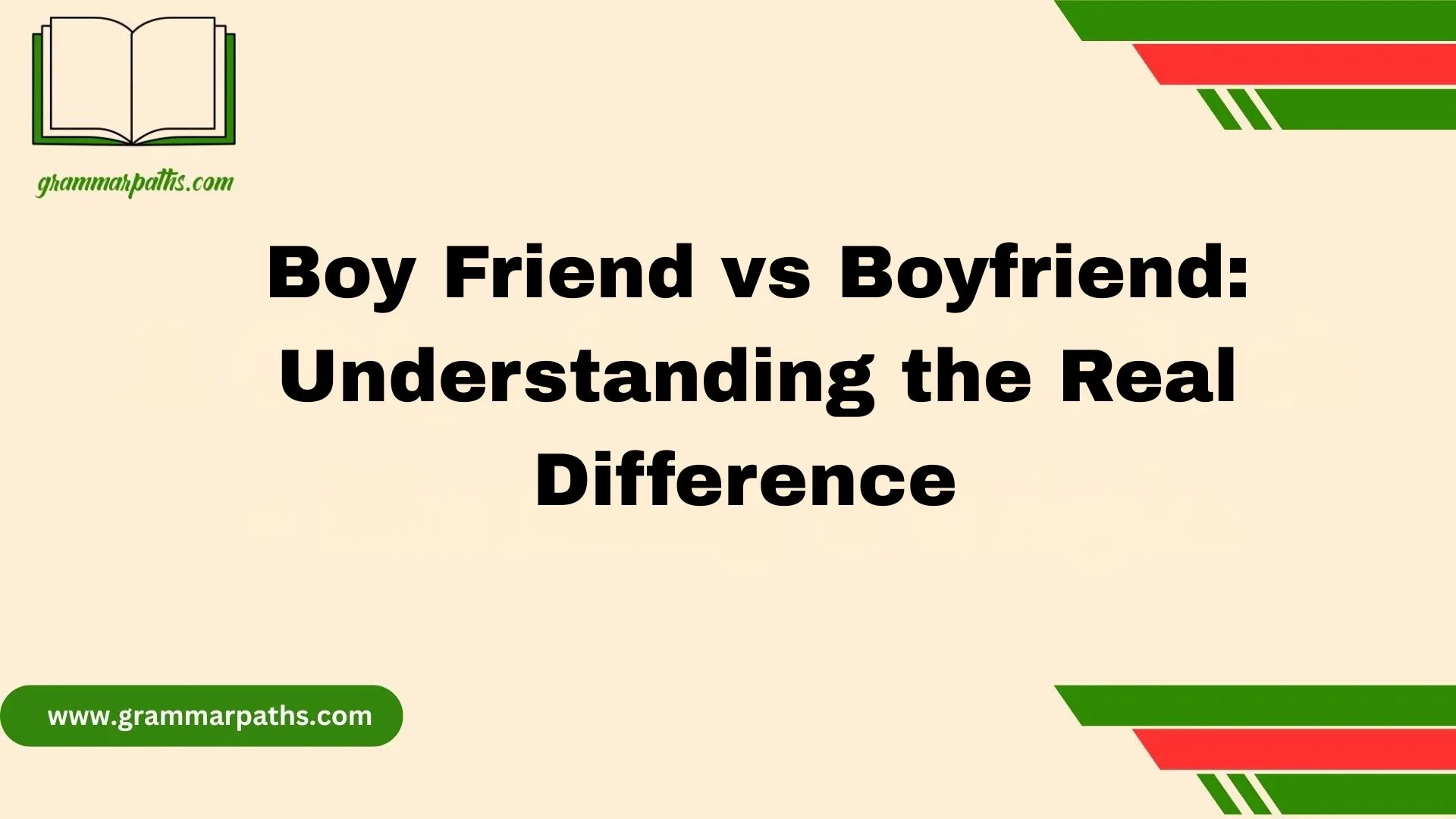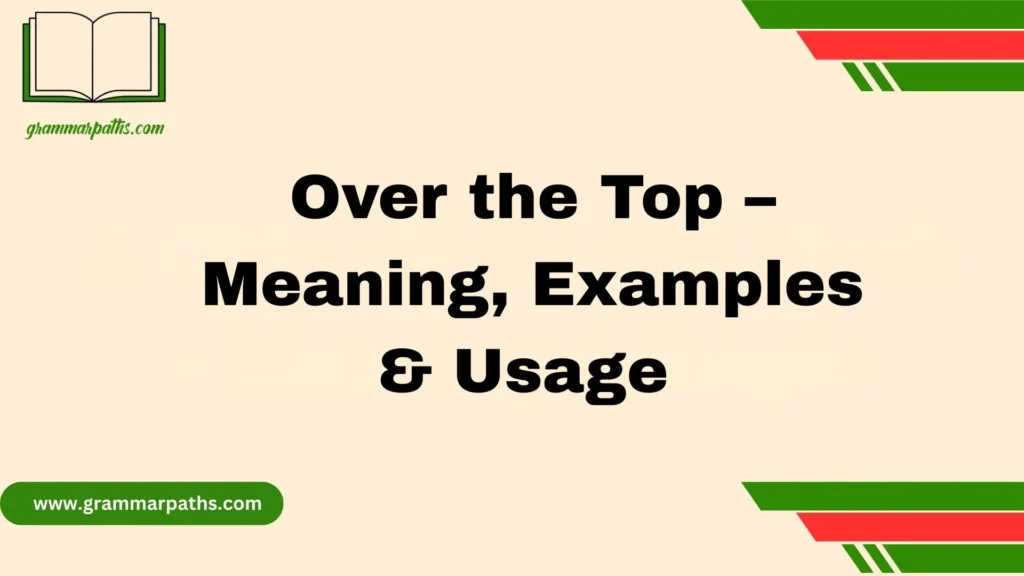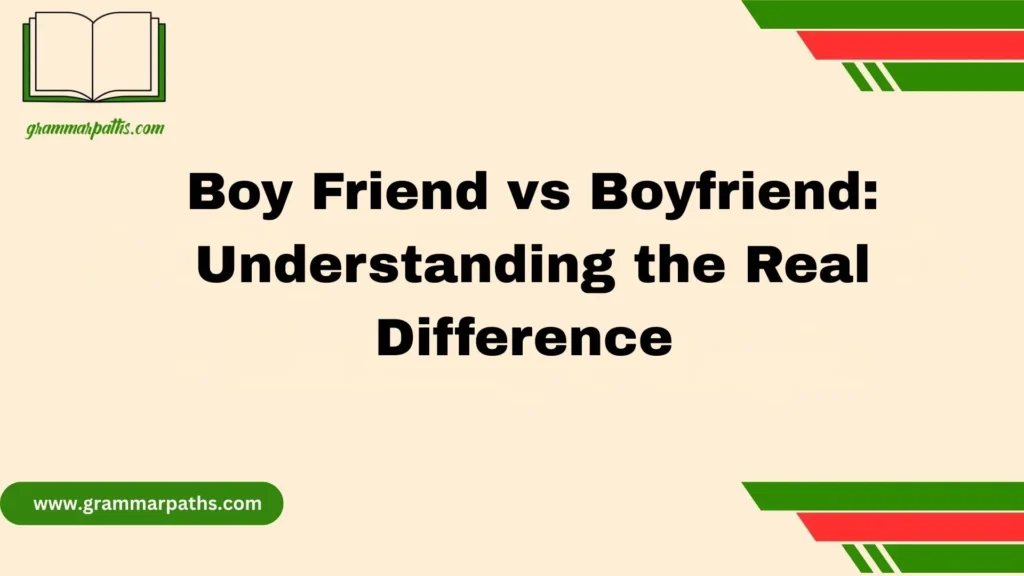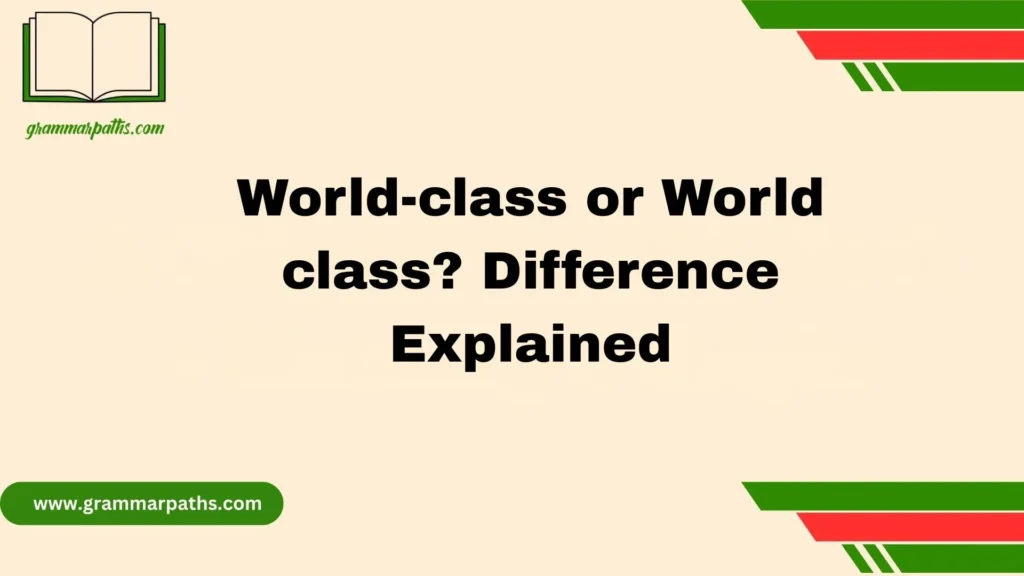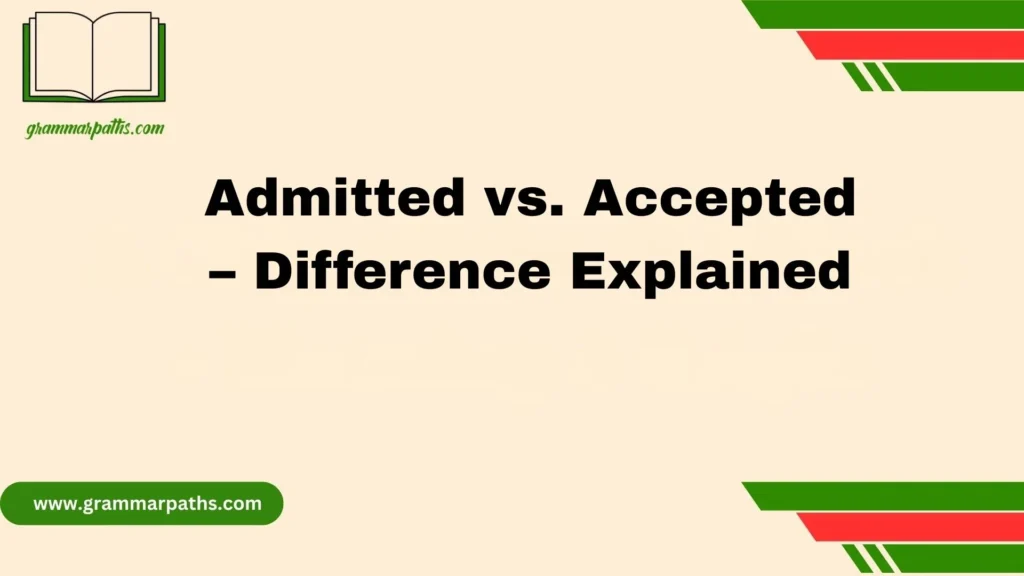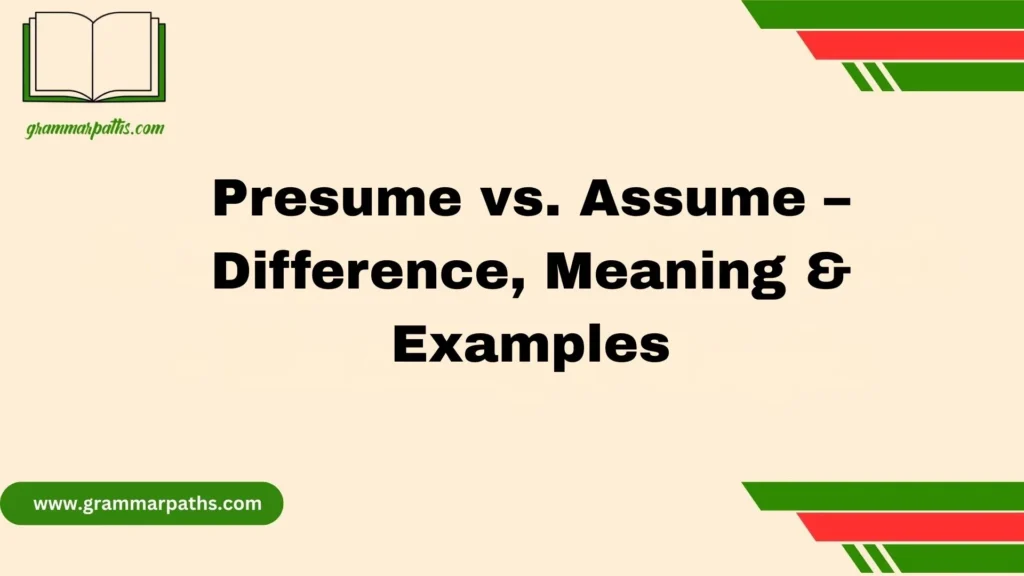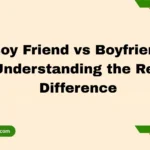When I was helping a foreign exchange student adjust to school life, we faced a funny situation that turned into a learning moment. She introduced a boy from her class as her “boy friend,” and the host parents’ reaction was instantly awkward. That tiny space between “boy” and “friend” caused a big misunderstanding. In English, little terms like boyfriend carry a special meaning—they usually point to a relationship. This example showed the difference that a small detail can make, not just in grammar but in real-life communication.
Over time, I learned how easily students can confuse others just by how they write or say a phrase. The term you choose can shift the direction of a conversation, especially in texting or online status updates. Different words, styles, and contexts across cultures can send mixed signals if you’re not careful. My guide for learners is simple—stay clear and never doubt the power of precision in communication. Whether you’re describing a friend or a boyfriend, make sure your message fits the modern world’s pace of conversations and keeps the confusion away.
Definition and Core Meaning
Let’s start by clearing up the core difference between the two terms. While both include the words “boy” and “friend,” their combined form creates an entirely new meaning.
What “Boy Friend” Technically Means
When written as two words — “boy friend” — the phrase simply means a male friend. There’s no romantic implication, no emotional exclusivity, and no commitment attached. It’s purely platonic.
For example:
- “I went hiking with my boy friend Mark this weekend.”
- “She has many boy friends from her soccer team.”
In both cases, boy friend refers to a male companion or friend. This usage, however, is considered old-fashioned today. Most people now prefer to say “male friend” or “guy friend” to avoid confusion.
Why It’s Rarely Used Today
In everyday English, writing “boy friend” as two words can make your meaning unclear. Since “boyfriend” (one word) has become the dominant form, readers often assume romance even if you meant friendship. This is why modern grammar guides and dictionaries recommend using alternatives like “male friend” instead.
What “Boyfriend” Really Means
On the other hand, “boyfriend” — written as one word — refers to a romantic male partner. It implies emotional connection, affection, and exclusivity, often within dating or romantic relationships.
Examples:
- “My boyfriend and I are celebrating our anniversary tonight.”
- “She introduced her boyfriend to her parents.”
This compound noun carries clear romantic meaning and is widely recognized in both spoken and written English. You’ll find it in literature, social media, and everyday speech — it’s part of modern relationship vocabulary.
Quick Tip
If romance is involved, use “boyfriend.”
If it’s just friendship, use “male friend.”
Grammar and Lexical Evolution
Language isn’t static — it evolves with culture, usage, and social habits. The difference between “boy friend” and “boyfriend” shows how meaning can shift through time and repetition.
The Historical Shift from “Boy Friend” to “Boyfriend”
Originally, English speakers wrote “boy friend” as two separate words. In the early 20th century, this form was common and referred to any male acquaintance or companion. But by the 1940s and 1950s, the two words gradually fused into “boyfriend” as people started using it exclusively to describe a romantic partner.
Historical Timeline Snapshot:
| Period | Common Usage | Meaning | Example |
| Late 1800s | Boy friend | Male companion (non-romantic) | “My boy friend helped me carry the books.” |
| Early 1900s | Boy friend | Male acquaintance | “She has many boy friends in school.” |
| Mid 1900s | Boyfriend | Romantic partner | “He’s my boyfriend.” |
| Today | Boyfriend | Romantic partner only | “My boyfriend is coming over.” |
This shift reflects a lexical process called compounding, where two separate words merge over time and develop a distinct new meaning. English is full of such examples: “web site” → “website,” “data base” → “database,” and “e mail” → “email.”
Why Spelling Matters in Modern Usage
In modern English, spelling defines meaning. The compound form “boyfriend” is now universally accepted to mean a romantic partner. Writing “boy friend” today could make your sentence look like a typo or an outdated phrase.
Modern dictionaries, including Merriam-Webster, Oxford, and Cambridge, list “boyfriend” as a single noun meaning “a man who someone is having a romantic or sexual relationship with.”
So while “boy friend” technically isn’t incorrect, it’s uncommon, outdated, and confusing in modern contexts. If you’re writing or speaking today, it’s best avoided.
Cultural and Social Interpretations
The Role of Context and Intention
Language thrives on context. The words you use depend not only on their dictionary meaning but also on your audience, tone, and situation.
For instance:
- “I went to a concert with my friend Jake.” (neutral, platonic)
- “I went to a concert with my boyfriend Jake.” (romantic, exclusive)
Both sentences are grammatically correct, but the second signals emotional depth. That’s why choosing the right form matters — it defines how others interpret your relationship.
How Misunderstandings Happen
Miscommunication often occurs when someone says “boy friend” intending platonic friendship, but listeners hear “boyfriend.”
Example:
“I’m going to the movies with my boy friend.”
Response: “Oh, I didn’t know you were dating!”
Such confusion is common in English-speaking cultures because we rarely use “boy friend” anymore. Instead, people prefer saying “male friend,” “guy friend,” or simply naming the person.
Global and Cross-Cultural Perspectives
Different languages handle gender and friendship distinctions differently. For example:
- French: “ami” means friend; “petit ami” means boyfriend.
- Spanish: “amigo” is a friend; “novio” is a boyfriend.
- Japanese: uses “kareshi” exclusively for a romantic boyfriend.
English, however, depends heavily on context and word formation. This flexibility can lead to ambiguity — especially in writing — which makes understanding the “boy friend” vs. “boyfriend” difference even more important.
Modern Communication and Clarity
How to Avoid Miscommunication
Here are some easy ways to express yourself clearly and naturally in modern English:
- Use “male friend” instead of “boy friend.”
Example: “I’m having lunch with a male friend from work.” - Clarify the relationship early in conversation.
Example: “My friend Jake — not my boyfriend — is joining us.” - Let tone and context guide your phrasing.
In casual texting, people usually assume “boyfriend” unless clarified.
Pro Tip
In writing — especially on social media or emails — always use “boyfriend” for romantic meaning and “male friend” for platonic meaning. It prevents readers from reading between the lines.
Modern Alternatives and Slang
The digital age has changed how we describe relationships. While “boyfriend” remains standard, younger generations often use creative substitutes to express different emotional tones.
Common Modern Alternatives:
| Term | Meaning | Tone | Usage Example |
| Partner | Gender-neutral romantic companion | Neutral | “I’m going out with my partner.” |
| Significant Other (SO) | Serious romantic partner | Formal | “My SO and I just moved in together.” |
| Bae | Slang for loved one | Playful, youthful | “I miss my bae.” |
| Boo | Slang for romantic partner | Affectionate | “That’s my boo.” |
| Crush | Person one admires romantically | Flirty | “My crush finally texted me.” |
These terms reflect how culture constantly reshapes relationship language. Still, “boyfriend” remains the most recognized and grammatically correct term in formal and casual use alike.
The Psychology Behind the Words
Language reveals more than grammar — it reflects emotions and social boundaries. The words “boy friend” and “boyfriend” express different levels of emotional attachment.
- “Boy friend” shows a relationship built on companionship, trust, and shared interests, with no romantic intent.
- “Boyfriend” expresses affection, intimacy, and exclusivity — a romantic commitment.
Psychologists suggest that the transition from saying “he’s my friend” to “he’s my boyfriend” signals a shift in emotional and social identity. It’s how people label belonging and relationship status in public and private life.
“The word we choose reflects the role we assign to someone emotionally,”
— Dr. Rebecca Lawson, Relationship Psychologist, 2023.
Real-World Scenarios and Case Studies
Everyday Conversations
Here are examples showing how context changes everything:
| Sentence | Likely Interpretation |
| “I’m going to the beach with my boy friend.” | People assume it’s your boyfriend. |
| “I’m going to the beach with a male friend.” | Clear: platonic friend. |
| “My boyfriend and I are celebrating.” | Romantic partner, no confusion. |
Even native speakers sometimes stumble here, especially in spoken English where spacing can’t be seen. That’s why context and tone are your best tools.
From Friends to Lovers: The Transition
Sometimes, your boy friend becomes your boyfriend. Language reflects that emotional shift.
Example Scenario:
You’ve been friends for years. You hang out, text, share jokes — purely platonic. But over time, the friendship deepens. The moment you start dating, you stop saying “my friend” and start saying “my boyfriend.” That small linguistic change mirrors a major emotional one.
It’s not just grammar; it’s psychology and social signaling.
Expert Insights and Language Authority Perspectives
To understand how modern English defines these terms, let’s look at how major linguistic authorities view them.
Merriam-Webster Dictionary:
Boyfriend (noun): a man with whom someone is having a romantic or sexual relationship.
Oxford English Dictionary:
Boyfriend: a man that a woman is having a romantic or sexual relationship with.
Cambridge Dictionary:
Boyfriend: a man or boy that someone is having a romantic relationship with.
Interestingly, none of these dictionaries include the spaced version “boy friend” as a current usage. That’s proof of how the word has evolved and standardized.
Quick Comparison Table
| Term | Meaning | Romantic? | Common Today? | Example |
| Boy friend | A male friend (platonic) | ❌ No | Rare | “He’s my boy friend from college.” |
| Boyfriend | A romantic male partner | ✅ Yes | Common | “He’s my boyfriend.” |
| Male friend | Neutral alternative | ❌ No | Common | “My male friend came to visit.” |
Conclusion
Understanding the difference between boy friend and boyfriend might seem small, but it makes a big impact in real communication. That little space between the words changes the entire meaning. A “boy friend” simply means a boy who is your friend, while a “boyfriend” means someone you have a romantic relationship with.
The difference isn’t just about grammar—it’s about clarity and avoiding misunderstanding in conversations, whether spoken or written. In today’s modern world of texting, social status updates, and cross-cultural communication, being precise with words shows thoughtfulness and understanding. Always remember, the term you choose defines the message you send and the direction your conversation takes.
FAQs
1. What’s the main difference between “boy friend” and “boyfriend”?
The phrase “boy friend” means a male friend, while “boyfriend” means a romantic partner. The space between the words changes the meaning entirely.
2. Why do people get confused between the two terms?
Because they sound the same when spoken, people often confuse them. In English, spelling and spacing can completely change a word’s meaning.
3. Is it wrong to say “boy friend”?
Not at all. It’s correct if you’re talking about a friend who is a boy, not someone you’re dating.
4. How can I avoid misunderstanding in communication?
Always be clear in your writing and conversation. If the context doesn’t make it obvious, use phrases like “male friend” instead of “boy friend” to avoid mixed signals.
5. Why does grammar matter so much here?
Because grammar, style, and context define meaning. Even a small space can change your message, leading to confusion or awkward moments.

Grace Marie is the dedicated writer behind GrammarPaths.com, where she shares her passion for English grammar, idioms, and writing mastery. With a strong background in language studies and years of experience helping learners improve their communication skills, Grace creates clear, practical, and engaging content that makes English easy to understand.
